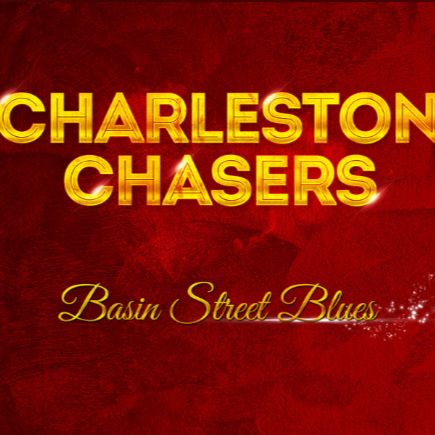Basin Street Blues: mémoire vivante de La Nouvelle-Orléans
Composé en 1926 par Spencer Williams, Basin Street Blues s’impose rapidement comme un standard emblématique du jazz dixieland. C’est l’interprétation magistrale de Louis Armstrong et ses Hot Five, enregistrée le 4 décembre 1928, qui en fait une œuvre fondatrice, marquant un jalon décisif dans l’évolution du jazz.
Le titre fait directement référence à Basin Street, artère centrale de Storyville – le légendaire quartier chaud du Vieux Carré français à La Nouvelle-Orléans. Cet espace bouillonnant de vie nocturne, de clubs animés et de maisons closes a vu naître les premières grandes figures du jazz, dont Armstrong lui-même et Jelly Roll Morton. Dans ce contexte, Basin Street Blues ne se limite pas à une chanson: elle incarne un pan entier de l’histoire culturelle américaine.
Sur le plan musical, la pièce brille par sa capacité à conjuguer expressivité et improvisation. Son thème principal, doux et mélancolique, est souvent confié à la trompette ou au cornet – instruments phares du jazz néo-orléanais – conférant à chaque interprétation une chaleur émotive particulière.
La postérité de Basin Street Blues est remarquable: au-delà des quelque cinquante enregistrements laissés par Armstrong, la chanson a été reprise des centaines de fois et figure dans la bande sonore de films aussi variés que The Glenn Miller Story (Anthony Mann), Casino (Martin Scorsese) ou The Curious Case of Benjamin Button (David Fincher).
Un témoignage raffiné d’un jazz en mutation
Enregistrée le 9 février 1931 à New York pour le label Columbia Records, cette version de Basin Street Blues par The Charleston Chasers réunit une formation exceptionnelle: Benny Goodman à la clarinette, Red Nichols à la trompette, Joe Sullivan au piano, Jack Teagarden au trombone et au chant, ainsi que Bob Haggart à la contrebasse et Gene Krupa à la batterie. Cet enregistrement se distingue par la finesse de son arrangement et la qualité d’interaction entre les musiciens, illustrant avec justesse une période charnière de l’histoire du jazz, entre tradition new-orleansienne et émergence du swing.
Dès l’introduction, la trompette de Red Nichols impose la mélodie avec une expressivité mesurée, claire et poignante. Le trombone de Teagarden, avec ses glissandos souples, vient teinter le thème d’une douce mélancolie, tandis que la clarinette de Goodman insuffle une légèreté fluide, apportant un équilibre aérien à l’ensemble. Ce trio de soufflants incarne l’élégance d’un dialogue instrumental respectueux, où chaque voix conserve sa singularité tout en s’inscrivant dans une dynamique collective.
Le piano de Sullivan joue un rôle central, assurant la charpente harmonique et rythmique du morceau. Ses accords syncopés évoquent encore l’influence persistante du ragtime, tout en annonçant les contours d’un jazz plus moderne. La section rythmique, discrète mais essentielle, installe un balancement souple et feutré: la contrebasse de Haggart ancre le tempo, tandis que Krupa, à la batterie, insuffle un swing discret, propice à la danse sans jamais alourdir l’atmosphère.
Basin Street Blues: memoria viva de Nueva Orleans
Compuesta en 1926 por Spencer Williams, Basin Street Blues se impone rápidamente como un estándar emblemático del jazz dixieland. La interpretación magistral de Louis Armstrong y sus Hot Five, grabada el 4 de diciembre de 1928, la convierte en una obra fundacional y en un hito clave en la evolución del jazz.
El título hace referencia directa a Basin Street, arteria central de Storyville —el legendario distrito rojo del Barrio Francés de Nueva Orleans—. Esta zona, vibrante de vida nocturna, clubes animados y casas de citas, fue el escenario donde surgieron algunas de las primeras grandes figuras del jazz, incluido el propio Armstrong, así como Jelly Roll Morton. En este contexto, Basin Street Blues no es solo una canción: encarna una parte fundamental de la historia cultural estadounidense.
Musicalmente, la pieza destaca por su capacidad de conjugar expresividad e improvisación. Su tema principal, suave y melancólico, suele interpretarse con trompeta o corneta —instrumentos emblemáticos del jazz de Nueva Orleans—, aportando a cada versión una calidez emocional particular.
La posteridad de Basin Street Blues es notable: más allá de los aproximadamente cincuenta registros realizados por Armstrong, la canción ha sido versionada cientos de veces y forma parte de la banda sonora de películas tan diversas como The Glenn Miller Story (Anthony Mann), Casino (Martin Scorsese) o The Curious Case of Benjamin Button (David Fincher).
Un testimonio refinado de un jazz en transformación
Grabada el 9 de febrero de 1931 en Nueva York para el sello Columbia Records, esta versión de Basin Street Blues por The Charleston Chasers reúne una formación excepcional: Benny Goodman en la clarinete, Red Nichols en la trompeta, Joe Sullivan en el piano, Jack Teagarden al trombón y en la voz, junto a Bob Haggart en el contrabajo y Gene Krupa en la batería. Esta grabación destaca por la sutileza de su arreglo y la calidad de la interacción entre los músicos, ilustrando con precisión un momento clave en la historia del jazz, entre la tradición de Nueva Orleans y el surgimiento del swing.
Desde la introducción, la trompeta de Red Nichols establece la melodía con una expresividad medida, clara y conmovedora. El trombón de Teagarden, con sus característicos glissandos, tiñe el tema de una suave melancolía, mientras la clarineta de Goodman aporta una fluidez ligera que equilibra el conjunto. Este trío de instrumentos de viento encarna la elegancia de un diálogo instrumental respetuoso, en el que cada voz mantiene su identidad dentro de una dinámica colectiva.
El piano de Sullivan cumple un papel central, sosteniendo la estructura armónica y rítmica de la pieza. Sus acordes sincopados evocan la persistente influencia del ragtime, a la vez que perfilan un jazz más moderno. La sección rítmica, discreta pero esencial, establece un balanceo suave y aterciopelado: el contrabajo de Haggart marca el pulso, mientras Krupa, en la batería, introduce un swing sutil, propicio para el baile sin cargar el ambiente.
Basin Street Blues: memoria vivente di New Orleans
Composta nel 1926 da Spencer Williams, Basin Street Blues si afferma rapidamente come uno degli standard più rappresentativi del jazz dixieland. È l’interpretazione magistrale di Louis Armstrong e dei suoi Hot Five, incisa il 4 dicembre 1928, a consacrarla come un’opera fondativa e una tappa decisiva nell’evoluzione del jazz.
Il titolo fa riferimento diretto a Basin Street, arteria principale di Storyville —lo storico quartiere a luci rosse del Vieux Carré di New Orleans—. Questo luogo, pulsante di vita notturna, club affollati e case di appuntamenti, fu la culla di alcune tra le prime grandi figure del jazz, come lo stesso Armstrong e Jelly Roll Morton. In questo contesto, Basin Street Blues non è solo una canzone: rappresenta un’intera pagina della storia culturale americana.
Dal punto di vista musicale, il brano si distingue per la sua capacità di unire espressività e improvvisazione. Il tema principale, dolce e malinconico, è spesso affidato alla tromba o al cornetto —strumenti simbolo del jazz di New Orleans—, conferendo a ogni interpretazione un’intensità emotiva particolare.
La fortuna di Basin Street Blues è eccezionale: oltre alla cinquantina di registrazioni lasciate da Armstrong, il brano è stato reinterpretato centinaia di volte e compare nelle colonne sonore di film molto diversi tra loro, come The Glenn Miller Story (Anthony Mann), Casino (Martin Scorsese) o The Curious Case of Benjamin Button (David Fincher).
Una testimonianza raffinata di un jazz in trasformazione
Registrata il 9 febbraio 1931 a New York per l’etichetta Columbia Records, questa versione di Basin Street Blues dei Charleston Chasers riunisce una formazione d’eccezione: Benny Goodman al clarinetto, Red Nichols alla tromba, Joe Sullivan al pianoforte, Jack Teagarden al trombone e alla voce, con Bob Haggart al contrabbasso e Gene Krupa alla batteria. Questa incisione si distingue per la raffinatezza dell’arrangiamento e per la qualità dell’interazione tra i musicisti, offrendo una testimonianza precisa di una fase cruciale nella storia del jazz, sospesa tra la tradizione di New Orleans e l’emergere dello swing.
Fin dall’introduzione, la tromba di Red Nichols afferma il tema con un’espressività controllata, limpida e toccante. Il trombone di Teagarden, con i suoi glissati morbidi, colora la melodia di una malinconia sottile, mentre il clarinetto di Goodman aggiunge una leggerezza fluida che bilancia l’insieme. Questo trio di fiati rappresenta l’eleganza di un dialogo strumentale rispettoso, in cui ogni voce mantiene la propria identità all’interno di una dinamica collettiva.
Il pianoforte di Sullivan svolge un ruolo centrale, sostenendo l’ossatura armonica e ritmica del brano. I suoi accordi sincopati richiamano ancora l’influenza persistente del ragtime, pur delineando i contorni di un jazz più moderno. La sezione ritmica, discreta ma essenziale, crea un’oscillazione morbida e vellutata: il contrabbasso di Haggart ancora il tempo, mentre Krupa, alla batteria, infonde uno swing misurato, invitando alla danza senza appesantire l’atmosfera.
Basin Street Blues: a living memory of New Orleans
Composed in 1926 by Spencer Williams, Basin Street Blues quickly established itself as a defining standard of Dixieland jazz. It was the masterful rendition by Louis Armstrong and his Hot Five, recorded on December 4, 1928, that cemented its place as a foundational work and a decisive milestone in the evolution of jazz.
The title refers directly to Basin Street, the main artery of Storyville—the legendary red-light district in the French Quarter of New Orleans. This vibrant area, alive with nightlife, bustling clubs, and brothels, was the cradle of early jazz legends such as Armstrong himself and Jelly Roll Morton. In this context, Basin Street Blues is far more than a song: it stands as a vital chapter in American cultural history.
Musically, the piece is distinguished by its seamless blend of expressiveness and improvisation. Its main theme, gentle and melancholic, is often played on the trumpet or cornet—signature instruments of New Orleans jazz—bringing an emotional warmth to every performance.
The legacy of Basin Street Blues is remarkable: beyond the fifty or so recordings left by Armstrong, the song has been covered hundreds of times and appears in the soundtracks of films as diverse as The Glenn Miller Story (Anthony Mann), Casino (Martin Scorsese), and The Curious Case of Benjamin Button (David Fincher).
A refined testimony of jazz in transition
Recorded on February 9, 1931, in New York for Columbia Records, this version of Basin Street Blues by The Charleston Chasers features an exceptional lineup: Benny Goodman on clarinet, Red Nichols on trumpet, Joe Sullivan on piano, Jack Teagarden on trombone and vocals, with Bob Haggart on double bass and Gene Krupa on drums. This recording stands out for its refined arrangement and the quality of interplay between musicians, capturing a pivotal moment in jazz history—where New Orleans tradition began to merge with the emerging swing style.
From the outset, Red Nichols’ trumpet states the melody with measured, clear, and poignant expressiveness. Teagarden’s trombone, with its smooth glissandos, lends the theme a gentle melancholy, while Goodman’s clarinet brings a flowing lightness that balances the ensemble. This trio of horns embodies the elegance of a respectful instrumental dialogue, where each voice maintains its individuality within a cohesive group dynamic.
Sullivan’s piano plays a central role, providing the harmonic and rhythmic foundation of the piece. His syncopated chords recall the lingering influence of ragtime, while also outlining the shape of a more modern jazz idiom. The rhythm section, discreet yet essential, establishes a smooth, velvety swing: Haggart’s bass grounds the tempo, while Krupa’s drumming adds a subtle pulse, inviting movement without overwhelming the mood.
Autres articles – Otros artículos – Altri articoli
Louis ARMSTRONG (04.08.1901–06.07.1971)
Benny GOODMAN (30.05.1909–13.06.1986)
Gene KRUPA (15.01.1909–16.10.1973)
Glenn MILLER (01.03.1904–15.12.1944)
Jelly Roll MORTON (20.09.1885–10.07.1941)
Red NICHOLS (08.05.1905–28.06.1965)
Joe SULLIVAN (05.11.1906–13.10.1971)


